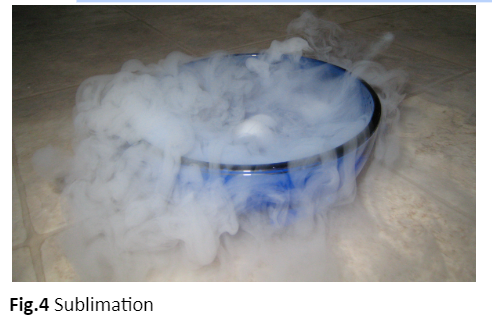Energy Transformation between Different Phases
Energy Transformation between Different Phases
This lesson aligns with NGSS PS3.A
Introduction
Energy transformation between different phases involves the transition of matter from one state to another—solid, liquid, gas, or plasma. These transitions are accompanied by significant energy changes, either through absorption or release of energy, primarily in the form of heat. This article explores these transformations in detail, providing examples to illustrate each phase change.
Melting and Freezing
Melting
Melting is the process by which a solid turns into a liquid when heat is applied. The energy absorbed during melting is known as the heat of fusion. This energy is required to break the intermolecular forces that hold the solid particles in a fixed, rigid structure.
Example: Ice to Water
When ice is heated, it absorbs energy. This energy breaks the hydrogen bonds between water molecules in the ice, causing it to melt into liquid water. Despite the continuous absorption of heat, the temperature of the ice-water mixture remains constant at 0°C until all the ice has melted.

Freezing
Freezing is the reverse of melting. It occurs when a liquid turns into a solid, releasing energy in the form of heat. The same amount of energy absorbed during melting is released during freezing.
Example: Water to Ice
When water is cooled, it loses energy. As the temperature drops to 0°C, water molecules slow down and form a crystalline structure, releasing energy in the process. This release of energy helps maintain the temperature of the surrounding environment.
Vaporization and Condensation
Vaporization
Vaporization is the process by which a liquid turns into a gas. This can occur through evaporation or boiling and requires energy known as the heat of vaporization.
Example: Water to Steam
Boiling water on a stove absorbs a significant amount of heat. This energy allows water molecules to break free from the liquid state and enter the gas phase as steam. The temperature remains at 100°C during the phase change until all the water has vaporized.

Condensation
Condensation is the process by which a gas turns into a liquid. It is the reverse of vaporization and involves the release of energy.
Example: Steam to Water
When steam comes into contact with a cooler surface, it loses energy. The water vapor molecules slow down and transition back into the liquid state, releasing heat in the process. This is why you often see water droplets forming on the surface of a cold glass.

Sublimation and Deposition
Sublimation
Sublimation is the transition from a solid directly to a gas, bypassing the liquid phase. This process requires energy to overcome the intermolecular forces within the solid.
Example: Dry Ice to Carbon Dioxide Gas
Dry ice (solid CO2) sublimates at room temperature. It absorbs heat from its surroundings, causing the solid carbon dioxide molecules to gain enough energy to enter the gas phase directly. This process occurs without passing through the liquid state.

Deposition
Deposition is the direct transition from a gas to a solid, bypassing the liquid phase. It is the reverse of sublimation and involves the release of energy.
Example: Frost Formation
Frost forms when water vapor in the air comes into contact with a cold surface and loses energy. The water vapor molecules transition directly into the solid state, forming frost. This process releases energy, warming the surrounding environment slightly.
Phase Diagrams and Energy Transformations
Phase diagrams are graphical representations that show the conditions under which a substance exists in different phases. They illustrate the relationship between temperature, pressure, and phase changes.
Example: Water Phase Diagram
A phase diagram for water shows the conditions under which water exists as a solid, liquid, or gas. At 1 atmosphere of pressure, water transitions from solid to liquid at 0°C (melting/freezing point) and from liquid to gas at 100°C (boiling/condensation point). The diagram also shows the conditions for sublimation and deposition at lower pressures.
Latent Heat
Latent heat is the energy absorbed or released during a phase change without a change in temperature. It is essential for understanding energy transformations between phases.
Latent Heat of Fusion
The latent heat of fusion is the energy required to change a substance from solid to liquid at its melting point.
Example: Ice Melting
For ice, the latent heat of fusion is approximately 334 J/g. This means that 334 joules of energy are required to melt 1 gram of ice at 0°C.
Latent Heat of Vaporization
The latent heat of vaporization is the energy required to change a substance from liquid to gas at its boiling point.
Example: Water Boiling
For water, the latent heat of vaporization is approximately 2260 J/g. This means that 2260 joules of energy are required to vaporize 1 gram of water at 100°C.
Conclusion
- Melting is the process by which a solid turns into a liquid when heat is applied. The energy absorbed during melting is known as the heat of fusion.
- Freezing occurs when a liquid turns into a solid, releasing energy in the form of heat.
- Vaporization is the process by which a liquid turns into a gas.
Related Worksheets:













